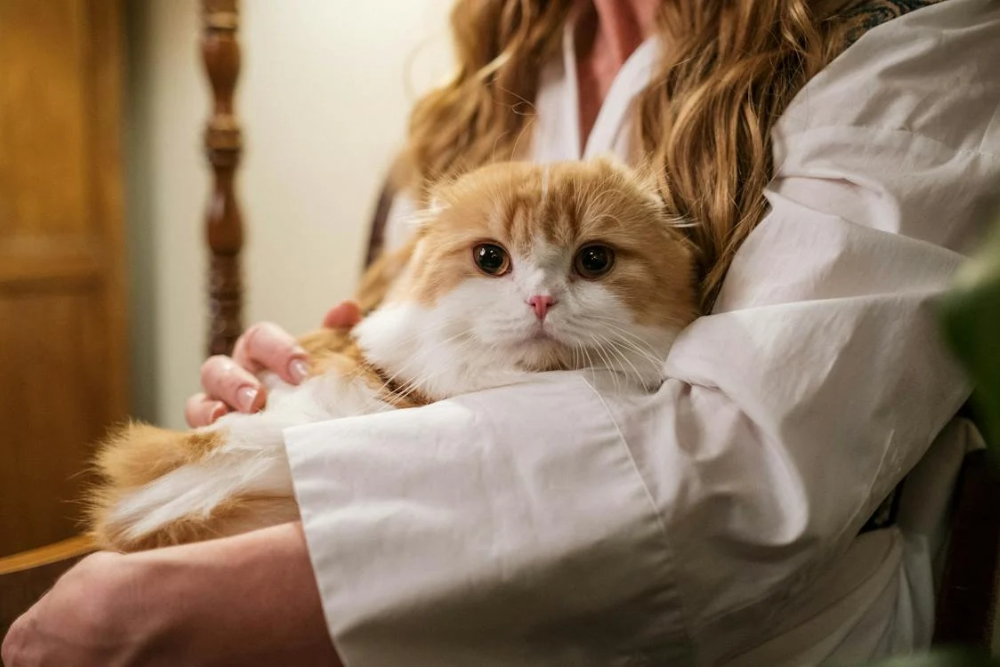Cats, with their enigmatic personalities, have a myriad of loves that contribute to their well-being. Discovering the secrets to your feline friend’s heart can be a delightful journey filled with joy and warmth. From the comforting purr of a cozy blanket to the irresistible allure of a feathered toy, understanding the things your cats love opens a window into their unique personalities. Cats often revel in the simple pleasures – a sun-drenched spot by the window, the rhythmic sound of a gentle petting session, or the tantalizing aroma of their favorite treats.
Observing these subtle cues allows you to forge a deeper bond with your furry companion, creating a harmonious and enriching environment that caters to their individual preferences. Embrace the enchanting world of your cat’s affections and witness the unspoken language of love that flourishes between you and your beloved feline companion.
Cats Love Taking Naps
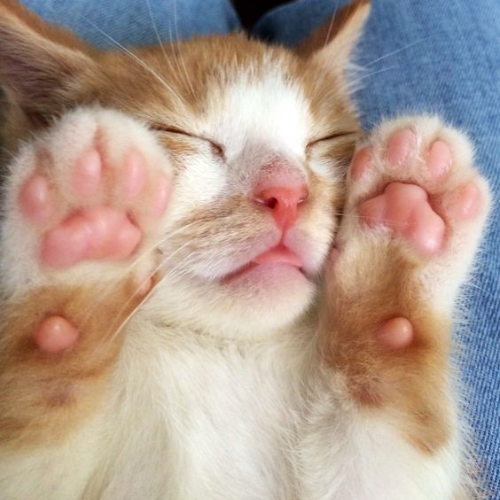
Cats, being crepuscular creatures, are naturally inclined to nap throughout the day. Napping is not just a physiological need for them; it’s a ritual deeply ingrained in their instincts. Understanding the science behind cat napping helps create an environment conducive to their well-being.
Cats, as obligate carnivores, have a digestive system optimized for a high-protein diet. After a meal, cats experience a surge in energy followed by a natural need for rest. Short and frequent naps allow them to conserve energy, promoting overall health and vitality.
Providing your cat with comfortable and secluded nap spots is crucial. Cats prefer warm, quiet, and elevated spaces. Placing soft blankets or cushions in quiet corners, on window sills, or atop cat trees creates inviting havens for your feline friend to indulge in their favorite pastime.
Cats Love Grooming Themselves and Being Groomed
Grooming holds a special place in a cat’s heart, serving both practical and emotional purposes. Cats engage in self-grooming not only for hygiene but also as a means of expressing comfort and contentment. Additionally, the act of being groomed by their human fosters a stronger bond.
Cats meticulously groom themselves to remove loose fur, dirt, and parasites. This instinctual behavior also helps regulate body temperature and distribute natural oils on their skin and coat. Witnessing a cat’s grooming routine is a sign of a happy and healthy feline companion.
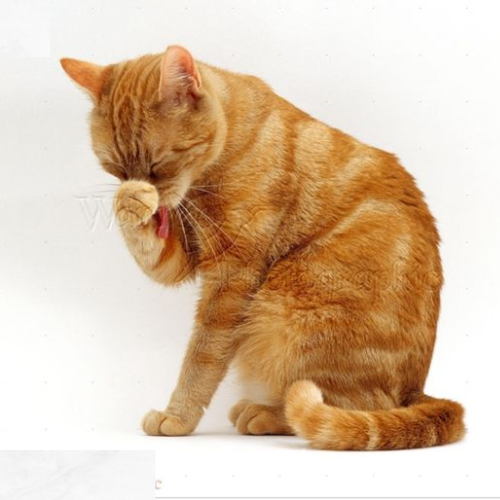
Introducing gentle grooming sessions with your cat enhances the human-feline relationship. Use a soft brush suitable for your cat’s coat type, and engage in slow, soothing strokes. This not only promotes a glossy coat but also creates a positive association between grooming and affection.
A Cat Cave
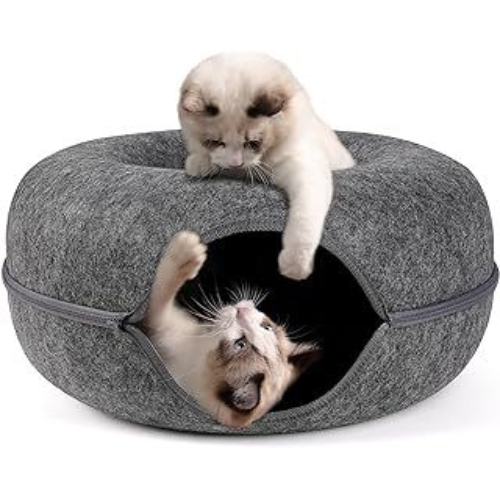
Cat caves stand as a testament to the innate desire of cats for a secure and private retreat. These cozy sanctuaries serve multiple purposes, providing a haven for relaxation, hiding, and vigilant observation of their surroundings.
Cats, being territorial creatures, seek spaces where they can feel safe and in control. Cat caves offer a sense of security, reducing stress and anxiety. This is especially crucial in multi-pet households or busy environments, allowing your cat to retreat when needed.
Explore various cat cave options to find the ideal one for your feline friend. Whether it’s a plush, enclosed bed, a cozy tent, or a strategically placed box, the key is to create a space that aligns with your cat’s preferences. Experiment with different textures and locations to ensure your cat feels comfortable and at ease.
Climbing Gyms
Cats’ innate climbing instincts are deeply rooted in their evolutionary history as hunters and predators. Climbing gyms provide an outlet for these instincts, offering both physical exercise and mental stimulation.
Investing in a quality climbing gym allows your cat to engage in activities that mimic their natural behaviors.
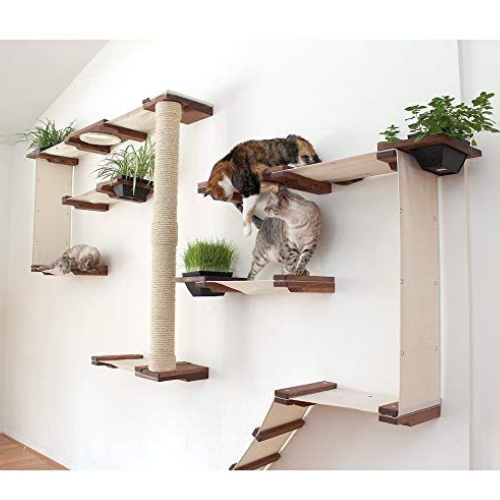
Climbing not only provides essential physical exercise but also encourages mental agility, keeping your cat entertained and happy.
Climbing is an excellent way to promote a healthy lifestyle for your cat. It helps maintain optimal weight, supports muscle development, and contributes to overall well-being. Additionally, climbing activities engage your cat’s mind, preventing boredom and potential behavioral issues.
Cats Love a Clean and Private Bathroom Space
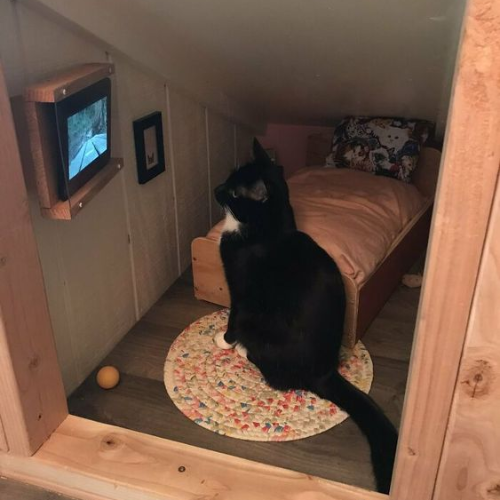
A clean litter box is not just a convenience; it’s a necessity for your cat’s health and happiness. Cats are meticulous creatures, and providing them with a private and hygienic bathroom space is paramount to ensuring their overall well-being.
Cats, by nature, are clean animals and may refuse to use a dirty litter box. A dirty environment can lead to stress, discomfort, and even health issues. Regular cleaning and maintenance of the litter box contribute to a harmonious relationship between you and your feline friend.
Cats appreciate privacy when attending to their bathroom needs. Placing the litter box in a quiet and secluded area allows your cat to do their business without feeling vulnerable. Experiment with different locations to find the spot that aligns with your cat’s preferences.
Cats Love Fresh, Nutritious Food
A well-balanced diet is the cornerstone of your cat’s health and vitality. Cats are obligate carnivores, and providing them with fresh, nutritious food is essential for their overall well-being and longevity.
Cats require a diet rich in animal proteins, essential fatty acids, vitamins, and minerals. Opting for high-quality commercial cat food or preparing balanced homemade meals ensures that your cat receives the nutrients necessary for optimal health.
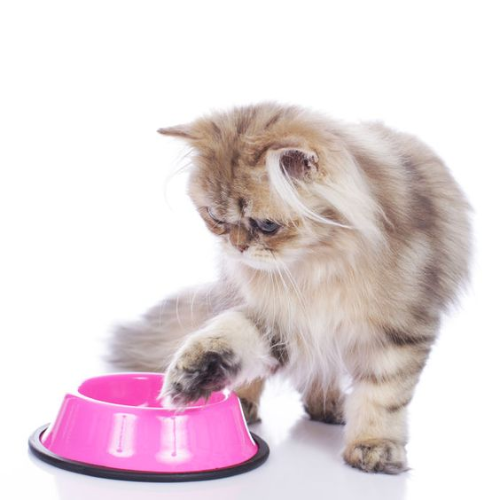
A nutritious diet supports your cat’s immune system, promotes healthy skin and coat, and contributes to proper growth and development. Consult with your veterinarian to determine the best dietary plan based on your cat’s age, weight, and specific health requirements.
Cats Love — and Need — to Scratch
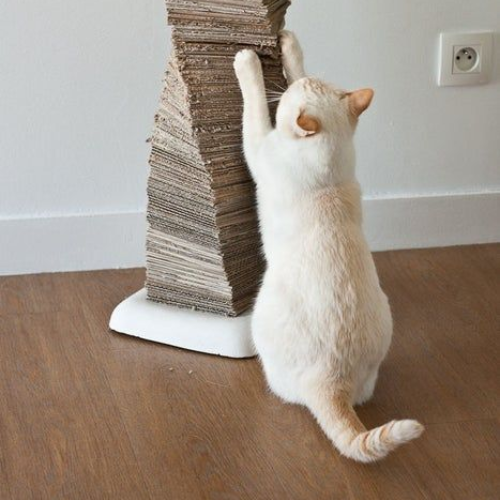
Scratching is an intrinsic behavior in cats that serves various purposes beyond merely sharpening their claws. Understanding why cats scratch and providing appropriate outlets for this instinctual behavior is essential for the well-being of both your cat and your furniture.
Scratching is a multifunctional behavior for cats. It helps them mark their territory, visually communicate with other cats, and maintain healthy claws by shedding the outer layers. Additionally, the act of stretching during scratching is vital for a cat’s physical well-being.
To redirect your cat’s scratching instincts away from your furniture, invest in suitable scratching posts. These posts should be tall enough for your cat to stretch fully and sturdy enough not to topple over during vigorous scratching. Experiment with different materials like sisal, cardboard, or wood to find your cat’s preferred scratching surface.
Multiple Litter Boxes
In a multi-cat household, maintaining a peaceful bathroom environment is crucial to minimizing territorial disputes and ensuring each cat has stress-free access to a clean litter box. Understanding the importance of multiple litter boxes is paramount for the overall well-being of your feline companions.
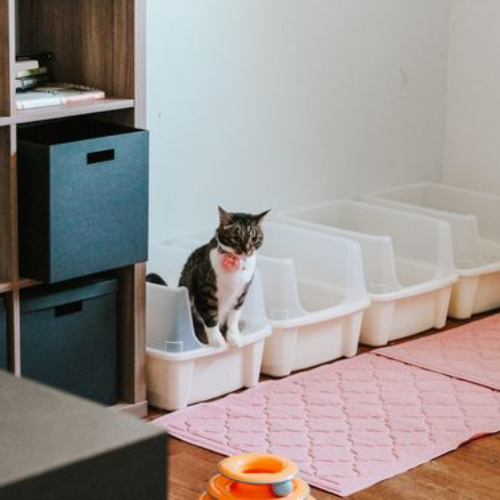
Cats can be territorial creatures, and sharing a single litter box can lead to conflicts. Providing multiple litter boxes allows each cat to have its designated space, reducing the likelihood of disputes and ensuring a calm bathroom environment.
Having multiple litter boxes ensures that each cat can easily access a clean space when needed. Cats are more likely to use a litter box that is not only easily accessible but also well-maintained. Regular cleaning and proper placement contribute to a positive bathroom experience for your feline friends.
The Right Kind of Litter Box
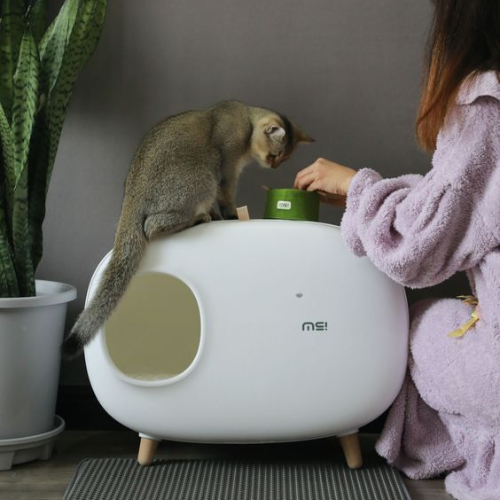
Cats can be discerning when it comes to their bathroom preferences. Experimenting with different styles and materials ensures that you find the right litter box that suits your cat’s unique needs, promoting regular and comfortable use.
Cats may have specific preferences when it comes to litter boxes. Some may prefer covered boxes for privacy, while others may favor open ones for easy access. Experiment with various sizes, shapes, and materials to determine what resonates with your cat.
The right litter box encourages regular use, contributing to a hygienic environment and preventing potential behavioral issues. Pay attention to your cat’s behavior and preferences to ensure the litter box meets their expectations, ultimately fostering a positive bathroom experience.
Daily Litter Cleanings
Maintaining a clean litter box is a fundamental aspect of responsible cat ownership. Cats appreciate a pristine space and are more likely to consistently use a litter box that is regularly cleaned.
Cats are clean animals, and a dirty litter box can lead to stress, discomfort, and even health issues. Daily litter cleanings remove waste promptly, ensuring a fresh and inviting space for your cat.
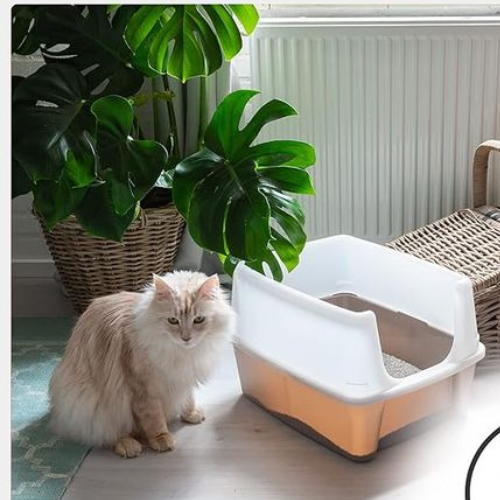
Incorporate daily litter cleanings into your routine to create a habit that benefits both you and your cat. Regular cleaning not only promotes cleanliness but also allows you to monitor your cat’s health through changes in litter box behavior.
Cats Love High Places for Watching and Hiding
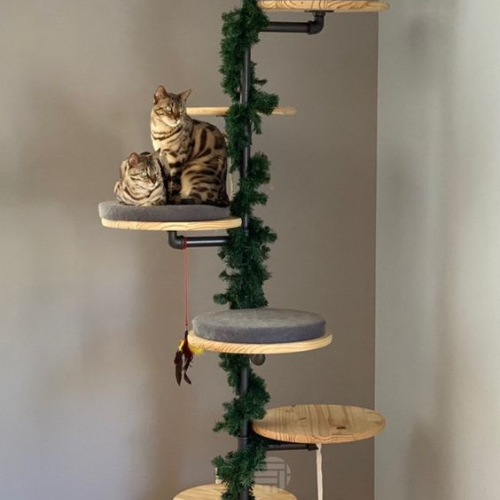
Understanding your cat’s innate desire for elevated spaces is key to creating an environment that fulfills their instincts. Providing high perches satisfies their need for observation points and secure hiding spots.
Cats enjoy being above ground to observe their surroundings. Investing in cat trees, shelves, or window perches allows your cat to satisfy their natural instinct, promoting mental stimulation and overall well-being.
High places also serve as secure hiding spots, offering your cat a retreat when they need solitude or feel threatened. Providing elevated spaces contributes to a sense of security and confidence in your feline companion.
A Sunny Spot to Snooze
Cats are natural sun-seekers, drawn to sunlight for its warmth and soothing qualities. Creating a designated sunny spot allows your cat to bask in the natural light, fostering a sense of calmness and relaxation during their snooze sessions.
Identify a location in your home where sunlight streams in consistently. This could be a sunny windowsill, a cozy perch by the balcony, or a sun-drenched spot on the floor. Arrange a comfortable bed or blanket to create an inviting snooze area for your feline friend.
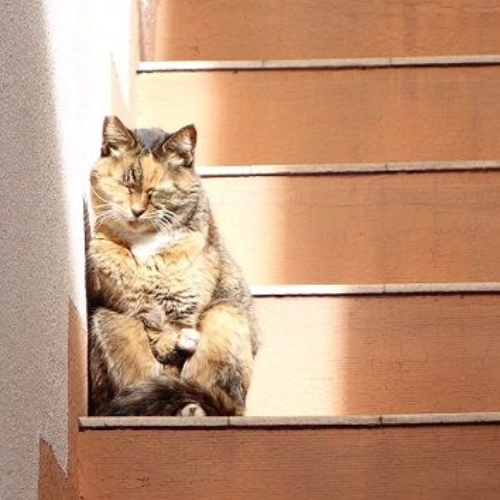
Sunbathing not only provides warmth but also offers your cat essential vitamin D, which is crucial for bone health. Additionally, exposure to sunlight regulates their circadian rhythm, promoting better sleep patterns and overall well-being.
Cats Love Running Water
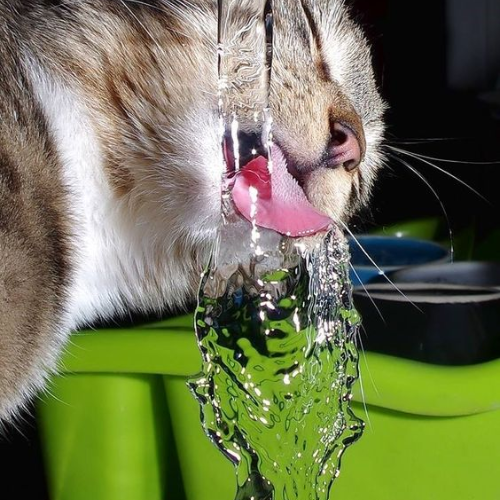
Many cats exhibit a preference for running water over stagnant sources. Investing in a cat-friendly water fountain not only encourages proper hydration but also adds an element of enjoyment to your cat’s drinking experience.
Cats may not drink enough water from traditional bowls. Running water entices them to drink more, supporting kidney function and preventing urinary issues.
A cat fountain mimics the appeal of a flowing stream, making it an attractive and practical addition to your cat’s environment.
Cats Love a Stimulating Environment
Cats are natural hunters and thrive in an enriched environment that stimulates their senses. Introduce a variety of interactive toys, puzzle feeders, and rotating play activities to keep your cat mentally engaged and physically active.
Toys that mimic prey behavior, such as feather wands or interactive mice, tap into your cat’s hunting instincts. Engage in play sessions regularly to provide mental stimulation and encourage physical exercise.
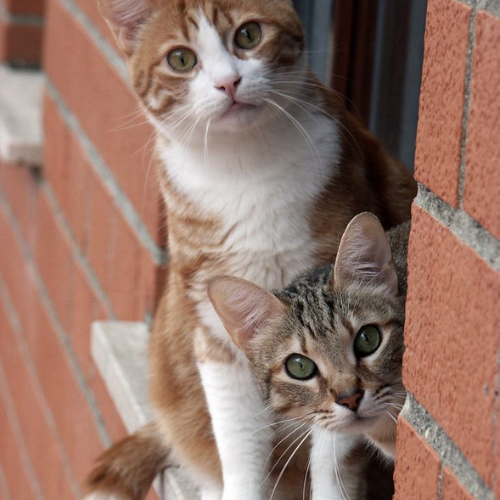
Puzzle feeders challenge your cat’s problem-solving skills and make mealtime more engaging. These devices dispense small amounts of food as your cat interacts with them, turning feeding into a mentally stimulating activity.
Cats Love Daily Playtime
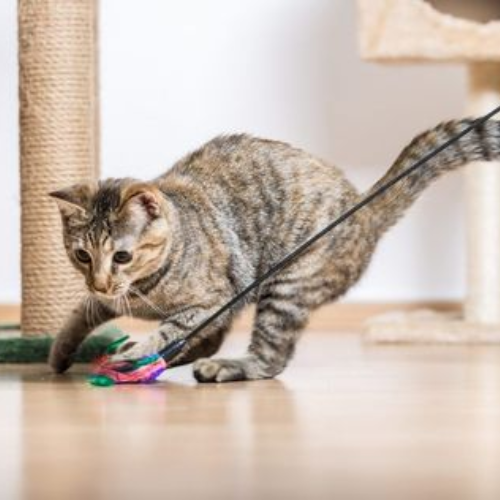
Playtime is a cornerstone of a cat’s well-being, providing essential physical exercise and mental stimulation. Engaging in daily interactive play sessions with toys that mimic prey not only satisfies your cat’s natural instincts but also strengthens the bond between you and your feline friend.
Opt for toys that simulate the movement of prey, such as feather wands or laser pointers. These toys tap into your cat’s hunting instincts, promoting physical activity and mental engagement. Rotate toys regularly to keep playtime exciting and dynamic.
Daily playtime offers numerous benefits, including weight management, stress reduction, and the prevention of behavioral issues. It is a time for your cat to release pent-up energy, fostering a content and satisfied demeanor.
Cats Love Their Humans
Cats form deep connections with their human companions, seeking affection and companionship. Spending quality time with your cat, offering gentle strokes, and engaging in interactive activities strengthens the emotional bond between you and your feline friend.
Find activities that your cat enjoys, whether it’s gentle grooming, interactive play, or simply sitting together. Cats appreciate routine, so dedicating specific times for bonding activities helps establish a sense of security and trust.
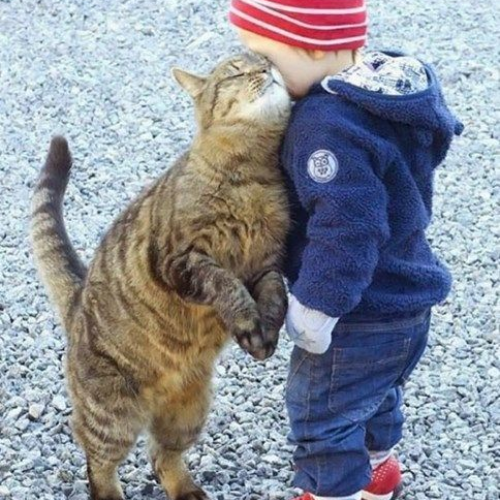
Pay attention to your cat’s body language and vocalizations to understand their preferences. Some cats enjoy lap time and cuddles, while others may prefer interactive play. Respect their cues to ensure a positive and enjoyable bonding experience.
Cats Love Watching Birds
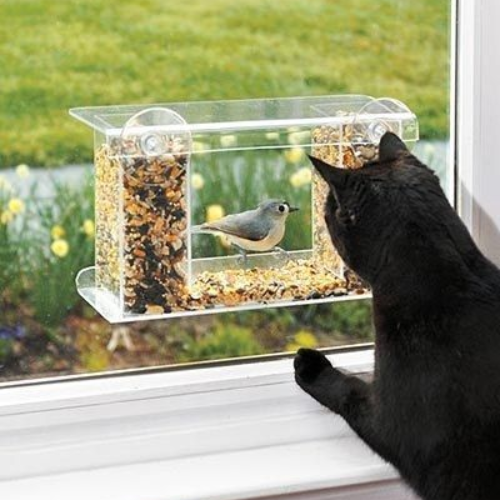
Bird watching is a beloved pastime for many cats, offering entertainment and mental stimulation. Create a bird-friendly environment by placing bird feeders outside windows, allowing your indoor cat to enjoy the fascinating sights of feathered friends.
Install bird feeders within view of your cat’s favorite window. The presence of birds provides visual enrichment, keeping your cat engaged and curious. Ensure the safety of both birds and your cat by placing feeders strategically.
Bird watching not only satisfies your cat’s predatory instincts but also alleviates boredom. Consider placing perches or cat trees by windows to create comfortable observation spots, allowing your cat to indulge in the captivating world of feathered creatures.
Snuggles—But on Their Terms
Respecting your cat’s preferences is key when it comes to snuggling. While many cats enjoy cuddling, it’s crucial to let them take the lead and control the level of intimacy. This approach ensures a positive bonding experience and fosters a sense of trust between you and your feline friend.
Observe your cat’s body language and vocalizations to gauge their comfort level. If they initiate contact or show signs of enjoyment, such as purring and kneading, feel free to reciprocate. If your cat prefers personal space, respect their boundaries to avoid causing stress or discomfort.
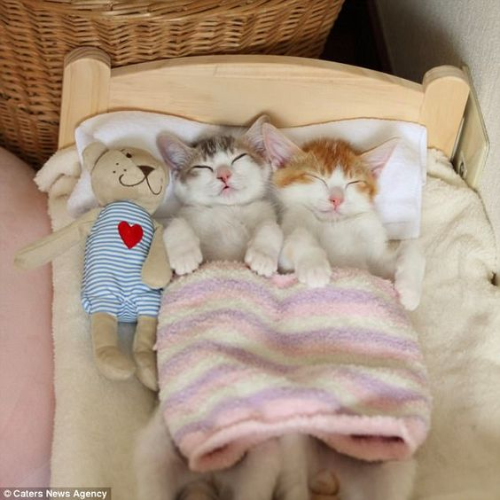
Create designated cozy spots with comfortable blankets or beds where your cat can retreat when they desire solitude. Offering a variety of cozy spaces allows them to choose the level of closeness they feel comfortable with at any given time.
A Long, Slow Blink
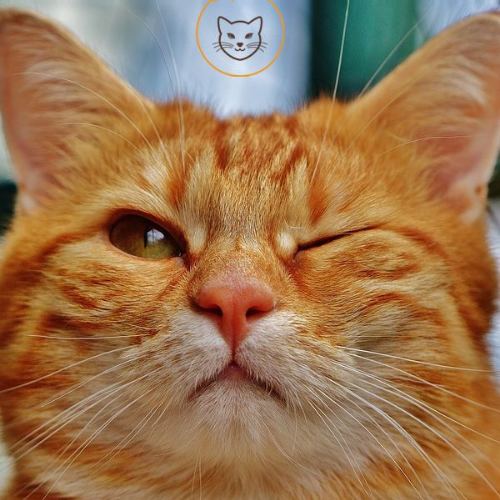
The long, slow blink is a powerful form of communication in the feline world, expressing trust and affection. Recognizing and reciprocating this gesture deepens your connection with your cat, creating a positive and meaningful interaction.
When your cat gives you a slow blink, respond in kind. Gently close your eyes and reopen them in a slow and deliberate manner. This reciprocal gesture reinforces the bond between you and your cat, conveying a sense of mutual understanding and trust.
Slow blinking is a behavior reserved for those a cat considers part of their inner circle. By engaging in this exchange, you build trust and strengthen the emotional connection with your feline companion.
Knowing What Their “Tail Talk” Means
Understanding your cat’s tail movements is essential for interpreting their emotions and intentions. Tail positions convey a wide range of feelings, from curiosity to agitation, providing valuable insights into your cat’s state of mind.
A raised tail often signifies confidence and happiness, while a puffed-up tail indicates fear or agitation. A gently swaying tail expresses curiosity, while a lashing tail may indicate irritation. Paying attention to these cues enhances your ability to respond appropriately to your cat’s emotional needs.
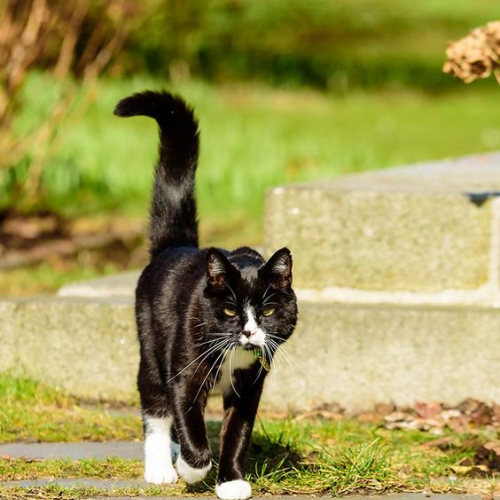
When interacting with other cats or animals, your cat’s tail can convey social signals. A tucked tail may indicate submission or fear, while an upright and quivering tail suggests excitement or anticipation. Understanding these cues promotes harmonious interactions in a multi-pet household.
Sounds Cats Love: A Harmonious Feline Symphony
Cats are not only visually oriented but also deeply attuned to sounds.
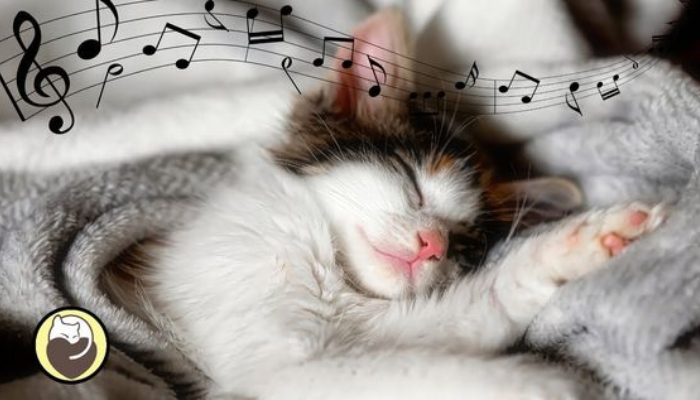
Gentle Purring Melodies
Purring is the quintessential sound of contentment in cats. The rhythmic vibrations produced when a cat purrs can have a calming effect on both the cat and its human companions. Understanding the nuances of purring enhances the bond between cats and their owners.
Bird Chirps and Tweets
The melodic sounds of birds chirping and tweeting are a source of fascination for many cats. Whether enjoyed through an open window or on a nature soundtrack, these sounds can trigger a cat’s hunting instincts and provide auditory enrichment.
Rustling Leaves and Nature Sounds
Cats are keenly attuned to the sounds of nature. The rustling of leaves, the gentle breeze, or the distant sounds of wildlife can captivate a cat’s attention, offering a sensory experience that mimics their natural habitat.
The Crinkling of Paper
The crinkling sound of paper can be strangely appealing to cats. Whether it’s the texture or the intriguing noise, the crinkling of paper often sparks playful behavior and curiosity in felines.
Soft Whispering Voices
Cats are known to respond positively to soft, soothing voices. Gentle whispers and calming tones can create a sense of security and comfort for cats, especially during moments of relaxation or cuddling.
The Tinkling of a Cat Collar
The soft tinkling sound of a cat’s collar can be music to their ears. This auditory cue helps cats locate each other in multi-pet households and may even signal the approach of a beloved human.
Calming Classical Music
Research suggests that cats may have a preference for classical music. The soothing tones and harmonies can create a peaceful environment, promoting relaxation and reducing stress for our feline friends.
Ambient White Noise
Some cats find comfort in ambient white noise, which can drown out sudden or jarring sounds. White noise machines or gentle hums can create a consistent auditory backdrop that promotes a sense of security for cats.
why do cats love milk?
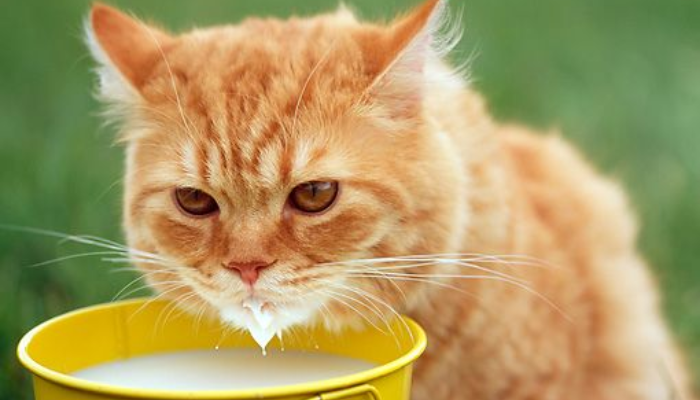
The notion of cats loving milk is a common belief, often perpetuated by popular culture and media. However, it’s important to note that while this association is deeply ingrained in our cultural understanding of cats, not all cats can or should consume milk.
The image of a cat lapping up a bowl of milk is a classic depiction in literature, movies, and advertisements. This portrayal may have originated from the idea that milk is a wholesome and comforting food, associating it with the care of kittens by their mother.
Contrary to the popular belief, many adult cats are lactose intolerant. Lactose is a sugar found in milk, and the enzyme needed to digest it, lactase, decreases in production as cats grow out of their kitten phase. As a result, feeding milk to adult cats can lead to digestive issues, including upset stomach, diarrhea, and abdominal discomfort.
While not all cats can tolerate milk, some still show an interest in it. This attraction might be rooted in the smell, texture, or the association of milk with their early kittenhood. The act of lapping at a liquid might also be soothing or pleasurable for some cats.
If you want to treat your cat to a special beverage, there are cat-friendly milk substitutes available in pet stores. These products are formulated to be lactose-free and are a safer option for cats who enjoy the taste without the digestive repercussions.
The idea that cats universally love milk is a charming but inaccurate stereotype. It’s crucial to recognize that each cat is an individual with unique dietary needs. Before offering milk or any new food item to your cat, it’s advisable to consult with your veterinarian to ensure it aligns with their health requirements. Always prioritize your cat’s well-being and provide treats or indulgences that are safe and suitable for their digestive system.
Cats Love Cardboard
Cats’ affinity for cardboard is a curious and well-observed behavior that can be attributed to several factors:
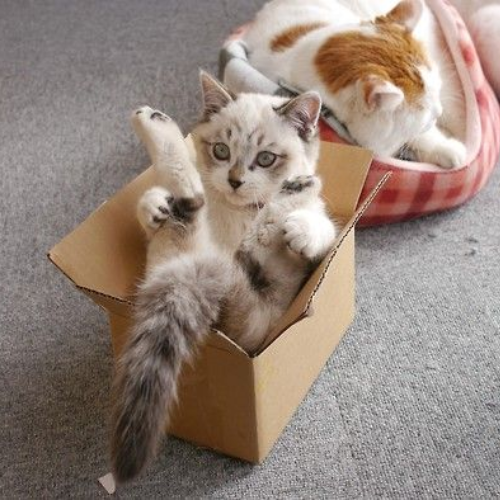
Texture and Sensation:
Scratching Instinct: Cats have a natural instinct to scratch surfaces to maintain their claws, and cardboard provides an ideal texture for this purpose. The fibrous and slightly rough texture of cardboard helps cats shed the outer layers of their claws, keeping them healthy and sharp.
Comfort and Warmth:
- Insulating Properties: Cardboard has insulating properties that make it an attractive material for cats to lounge on. It retains warmth, providing a cozy spot for cats to rest. Cardboard boxes, in particular, create a confined space that appeals to a cat’s desire for a secure and sheltered environment.
Hiding and Hunting Instincts:
- Enclosed Spaces: Cardboard boxes and structures offer enclosed spaces that mimic the natural hiding spots cats seek in the wild. This satisfies their innate instincts to find secure and camouflaged locations for observation, rest, and play.
- Prey-Like Behavior: Cats often exhibit predatory behavior even in domestic settings. Cardboard boxes serve as potential hiding spots for “ambushing” toys or unsuspecting humans, allowing cats to engage in playful hunting behaviors.
Environmental Enrichment:
- Novelty and Exploration: Cats are curious creatures that appreciate novel stimuli in their environment. Introducing a new cardboard box or structure provides a change in their surroundings, encouraging exploration and play.
Chewing and Gnawing:
- Oral Stimulation: Some cats enjoy chewing or gnawing on cardboard. This behavior might serve as a form of oral stimulation, especially for younger cats or those going through teething phases.
Recycling Scents:
- Familiarity: Cats have a highly developed sense of smell. Cardboard, being a porous material, can retain the scents of the environment. Cats may be attracted to familiar scents or use cardboard as a way to mark their territory with scent glands located in their paws.
Entertainment and Play:
- Interactive Play: Cardboard boxes can be repurposed into DIY toys or puzzle feeders, providing mental stimulation for cats. They may bat at, pounce on, or crawl inside boxes as part of their play.
Cats’ love for cardboard encompasses a range of instinctual, sensory, and environmental factors. Providing cardboard structures and boxes as part of their living space can contribute to a cat’s physical and mental well-being, offering opportunities for play, relaxation, and the expression of natural behaviors.
FAQs:
Q: Why do cats love the sound of purring? A: Purring is associated with relaxation and contentment in cats. The rhythmic vibrations can have a soothing effect, promoting a sense of calm.
Q: Can certain sounds stress out cats? A: Yes, loud or abrupt sounds, such as vacuum cleaners or loud music, can stress out some cats. It’s essential to create a peaceful auditory environment for feline well-being.
Q: Do all cats respond to the same sounds? A: No, individual preferences vary among cats. Some may enjoy classical music, while others may prefer the sounds of nature. Observing your cat’s reactions helps determine their unique preferences.
Q: How many hours do cats sleep each day? A: On average, cats sleep 12-16 hours a day, with kittens and seniors needing more rest.
Q: Do all cats enjoy grooming sessions? A: While many cats enjoy self-grooming, individual preferences vary. Some cats may love human-assisted grooming, while others may not.
Q: Can I train my cat to use a specific litter box? A: Yes, with patience and positive reinforcement, most cats can be trained to use a particular litter box.
Q: Why do cats love high places? A: Cats are instinctively drawn to elevated spots as it provides a sense of security and a vantage point for observing their surroundings.
Q: How can I encourage my cat to drink more water? A: Providing a cat-friendly water fountain or adding wet food to their diet can encourage increased water intake.
Q: Do all cats enjoy interactive playtime? A: While most cats benefit from daily playtime, individual preferences vary. Experiment with different toys to find what your cat enjoys.
